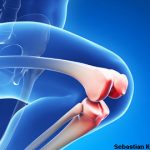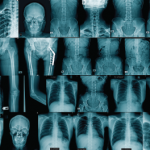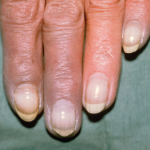A recent study found that dermatology patients taking long-term steroids are not always evaluated for steroid-induced osteoporosis…


A recent study found that dermatology patients taking long-term steroids are not always evaluated for steroid-induced osteoporosis…

The demonstrated connection between persistent effusion-synovitis and cartilage damage in certain osteoarthritis (OA) patients has implications for targeted treatment that updates previous OA treatment parameters…
Mary Gillis |
(Reuters Health)—Eating an overall healthy diet is tied to a lower risk of hip fracture among women over age 50, a U.S. study suggests. Researchers analyzed decades’ worth of dietary and health data for more than 100,000 U.S. men and women. They found that women who scored highest on the American Healthy Eating Index-2010 (AHEI)…
Reuters Staff |
NEW YORK (Reuters Health)—Diclofenac patches appear to be the most effective topical nonsteroidal anti-inflammatory drug (NSAID) for osteoarthritis (OA), according to a new systematic review and network meta-analysis. “Topical NSAIDs were effective and safe for OA,” Dr. Weiya Zhang of the University of Nottingham and City Hospital in the UK and colleagues write. “However, confirmation…
Lisa Rapaport |
(Reuters Health)—Black people with knee osteoarthritis may have a worse quality of life than white patients in part because they’re less likely to be offered knee replacement surgery or to get the procedure when it’s recommended, a U.S. study suggests. Knee replacement surgery has the potential to greatly relieve suffering from severe joint pain that…

SAN DIEGO—At the 2017 ACR/ARHP Annual Meeting Nov. 3–8, experts discussed improving bone health in the U.S., gave tips on bone health disorders in pediatrics and reviewed new translational science findings for joint conservation in early osteonecrosis. E. Michael Lewiecki, MD, director of the New Mexico Clinical Research & Osteoporosis Center in Albuquerque, N.M., called…

SAN DIEGO—Top researchers gathered for a review course at the start of the 2017 ACR/ARHP Annual Meeting in November to describe new research, their own treatment strategies and new ways of thinking about an array of rheumatic diseases. Here are the highlights: Raynaud’s & Other Digit Problems When a patient walks into your clinic with…
Scott Baltic |
NEW YORK (Reuters Health)—People with gout face a modestly increased risk, of about 20%, for developing osteoporosis, compared to people without gout, researchers in Taiwan suggest. In their population-based study to examine a possible association between gout and subsequent osteoporosis, Dr. Victor C. Kok of Asia University (Taiwan), Taichung, and colleagues retrospectively analyzed data from…
Will Boggs, MD |
NEW YORK (Reuters Health)—Baseline measures of bone density, microarchitecture and strength predict the risk of fragility fractures in postmenopausal women, according to results from the Calgary CaMOS cohort. Changes in bone health were not associated with fracture risk, however, said Dr. Lauren A. Burt from the University of Calgary, Canada, who worked on the study….
Scott Baltic |
NEW YORK (Reuters Health)—Use of epidural steroid injections (ESIs) “should be approached with prudence,” particularly in patients who are at risk for osteoporotic fractures, such as women of postmenopausal age, according to authors of a systematic review. Although the literature presents a mixed picture, ESIs in doses as low as 80 mg methylprednisolone equivalents seem…